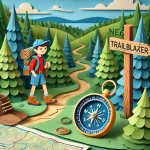Safety and Risk Management Guide (New England Edition)
Disclaimer: The following information is a guide to help ensure the safety of your event, but it is not a substitute for professional risk assessment or legal advice. Always work with local authorities and experts to meet safety regulations and protocols. NE6 assumes no responsibility for incidents occurring during your event.
Hey, it’s Johnny! Safety is one of the most critical parts of any event, whether you’re hosting a huge festival or a small community fair. Ensuring your attendees, vendors, and staff stay safe is not just about complying with regulations—it’s about creating a fun, worry-free experience. Whether you’re hosting a bustling festival in downtown Boston or a cozy fair in rural Vermont, this Safety and Risk Management Guide will help you identify risks, plan for safety, and handle emergencies. Let’s dive in!
Overview
Safety and risk management go beyond just following rules—they’re about preventing problems before they arise. This guide walks you through creating a comprehensive safety plan, managing unpredictable New England weather, coordinating with local authorities, and preparing for emergencies. With a solid safety plan, you’ll be ready for anything!
Step 1: Conduct a Risk Assessment
Before anything else, assess the risks specific to your event. This step will help you plan for safety and identify areas that need special attention.
1.1 Identify Event-Specific Risks
- Event Location Risks: Each venue has its own risks—whether it’s an outdoor festival, an indoor convention, or an event near water. Identify any hazards related to the location.
Example: A waterfront festival in Portland, ME, may require extra barriers or lifeguards, while an outdoor event in Vermont might need extra lighting to prevent falls on uneven terrain. - Weather-Related Risks: New England weather is famously unpredictable. Consider the possible impact of snow, rain, wind, or heat on your event.
Pro Tip: For fall or winter events, plan for sudden temperature drops or snowstorms. In summer, prepare for heatwaves and humidity, especially for coastal events. - Crowd Management: Large crowds can increase risks. Think about how to manage movement through narrow spaces, provide enough exits, and prevent overcrowding.
1.2 Evaluate Health and Safety Hazards
- Food Safety: If your event involves food vendors, make sure you assess the potential risks of food contamination or mishandling.
Example: At a seafood festival, work with local health authorities to ensure that seafood is stored and prepared at the correct temperatures. - Physical Hazards: Keep an eye out for tripping hazards, electrical equipment, and temporary structures that could cause injuries.
Pro Tip: Ensure that tent stakes, electrical cords, and equipment are secured, especially for outdoor events.
1.3 Assess Security Risks
- Security Concerns: Depending on the size and type of event, consider risks like theft, unruly behavior, or potential threats. Will you need extra security or bag checks?
Example: A large concert in Boston might require security personnel, crowd control barriers, and bag checks.
1.4 Plan for Medical Emergencies
- Emergency Medical Care: Know where the nearest hospitals or urgent care facilities are located, and have first aid stations clearly marked and staffed.
Pro Tip: For large events, consider having paramedics or trained first responders on-site.
Checklist for Risk Assessment:
- Identify risks specific to the event location.
- Consider weather, crowd management, and security.
- Plan for food safety and physical hazards.
- Ensure medical emergency procedures are in place.
Step 2: Work with Local Authorities
Collaborating with local police, fire departments, and other authorities ensures that your event is compliant with local regulations and prepared for emergencies.
2.1 Coordinate with Local Police and Fire Departments
- Notify Authorities in Advance: Contact the police and fire departments early in your planning process, especially for large events. They can assist with security, traffic control, and emergency response plans.
Example: If you’re organizing a parade in Boston, coordinate with the police for road closures and ensure EMS teams have access to the route. - Traffic Management: For events that require road closures or generate high traffic, work with local authorities to create a traffic management plan. Police can help redirect traffic and ensure pedestrian safety.
2.2 Secure Necessary Permits
- Fire Safety Permits: If your event uses temporary structures (tents, stages) or involves cooking on-site, you’ll likely need a fire safety permit and inspection.
Example: A food truck festival in Providence, RI, needs to meet fire safety standards, particularly if propane or open flames are used.
2.3 Emergency Planning with Local Agencies
- Emergency Plans: Work with local emergency services to create a plan for severe weather, medical emergencies, or other crises. Ensure clear communication channels are set up between your team and emergency personnel.
Pro Tip: Equip your staff with walkie-talkies or radios to maintain communication with local authorities on-site.
Step 3: Prepare for Weather-Related Issues
New England weather is famously unpredictable, so it’s essential to be prepared for anything, whether it’s heavy rain, snow, or extreme heat.
3.1 Prepare for Inclement Weather
- Rain Plans: For outdoor events, have a backup plan for rain. This might include renting tents, moving activities indoors, or setting up covered areas.
Pro Tip: Use heavy-duty stakes to secure tents, especially in windy areas like Newport or Cape Cod. - Snow Contingencies: Winter events require planning for snow removal, heaters, and walkways that are cleared and salted to prevent slips.
Example: At a holiday market in Burlington, VT, clear snow from vendor areas and walkways to keep everyone safe.
3.2 Manage Heat and Cold Exposure
- Heat: For summer events, provide shaded areas and hydration stations to prevent heat exhaustion. Keep an eye on weather forecasts and be prepared for heatwaves.
Pro Tip: If it’s hot, set up fans, misting stations, and distribute water bottles. - Cold: For fall and winter events, ensure attendees stay warm by offering blankets, space heaters, and hot beverages.
Step 4: Develop a Crowd Management Plan
Managing the flow of people at your event is crucial to avoid overcrowding, bottlenecks, and potential safety issues.
4.1 Control Access Points
- Entrances and Exits: Ensure there are enough entrances and exits to prevent overcrowding. Post clear signs directing attendees to these points.
Pro Tip: Set up security checks at designated entry points, especially for larger events like festivals or concerts.
4.2 Create a Site Map
- Signage and Markers: Create a clear site map and post it around the venue. Mark important areas like restrooms, food vendors, exits, and first aid stations.
Pro Tip: Make sure paths are wide and accessible, with clear directional signs. Ensure your event is ADA-compliant with ramps, accessible restrooms, and wide enough pathways for wheelchairs and strollers.
4.3 Monitor Crowd Behavior
- Security and Staff: Place staff or volunteers at key areas to monitor crowd behavior and direct traffic. Hire security personnel for larger events to manage the flow and address any issues that arise.
Step 5: Have an Emergency Response Plan
Despite the best planning, emergencies can happen. Here’s how to be prepared for them.
5.1 Medical Emergencies
- First Aid Stations: Set up first aid stations with clearly marked signs. For large events, consider having paramedics on-site to respond to emergencies.
Example: A marathon in Boston might require first aid tents and medical professionals stationed along the route. - Know Your Hospitals: Identify the closest hospitals and urgent care centers, and have transportation ready in case of serious medical emergencies.
5.2 Severe Weather or Natural Disasters
- Weather Monitoring: Assign a staff member to monitor the weather forecast throughout the event. If severe weather like thunderstorms or hurricanes is predicted, be ready to postpone or evacuate.
- Evacuation Plan: Have a clear evacuation plan in place, with designated exits and communication channels for alerting attendees and vendors.
Pro Tip: Make sure your team is trained on how to handle different types of emergencies, from fire evacuations to severe storms.
5.3 Emergency Communication
- Announcements: Use a PA system or similar tools to make emergency announcements, guiding attendees to exits or shelters in case of emergencies.
- Staff Communication: Equip your team with walkie-talkies or phones for fast communication in case of an emergency.
Step 6: Post-Event Safety and Wrap-Up
Even after your event concludes, safety remains a priority during breakdown and teardown.
6.1 Manage Event Tear Down Safely
- Vendor and Equipment Breakdown: Ensure vendors and staff follow proper breakdown procedures, especially when heavy equipment or crowded areas are involved.
Pro Tip: Assign staff to monitor and assist with teardown, ensuring that it’s done safely and efficiently.
6.2 Address Post-Event Safety Issues
- Check for Injuries or Lost Items: After the event, check with your staff to ensure there were no injuries or accidents. Set up a system for lost and found items.
- Post-Event Reports: Document any safety incidents that occurred and use this information to improve safety protocols for future events.
Pro Tips for Safety and Risk Management
- Plan for the Worst, Expect the Best: Always have backup plans in place for weather, medical issues, and crowd control, even if you expect everything to go smoothly.
- Work Closely with Local Authorities: Keeping police, fire departments, and emergency personnel informed helps ensure your event is safe and compliant with local regulations.
- Make Safety Visible: Attendees feel more comfortable when safety is evident. Post clear signs, make first aid stations easy to find, and ensure staff is trained in emergency protocols.
And there you have it—your Safety and Risk Management Guide for New England events! By following these steps, you’ll be prepared to handle whatever comes your way, from unpredictable weather to unexpected emergencies. Got any more questions? I’m here to help you keep your event running smoothly and safely! Let’s make sure your event is fun, safe, and unforgettable.


















Leave a Reply